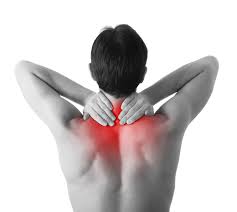Introduction:
Stress and pain have been intimately linked for years. Both can influence each other in varying degrees. Stress, whether acute or chronic, can influence the perception of pain. It may also contribute to painful conditions. This article explores the complex interactions between stress and pain and the psychological and physiological mechanisms that are at play. This article explores stress management strategies to reduce pain.
I. Understanding Pain Perception:
The perception of pain and its determination
Pain is a complex experience that includes sensory, cognitive and emotion factors.
The brain’s interpretation of nerve signals is one factor that contributes to subjective pain.
There are different types of pain.
Pain can be nociceptive or neuropathic.
Understanding the types of pain is important to understanding how stress affects them.
II. Stress and its effects on the body
Defining Stress:
Stress is the body’s reaction to perceived threats and challenges. It activates a “fight or flight” response.
Even though acute stress is adaptable, chronic stress can still be harmful to your mental and physical health.
Stress and Physiological Reaction
Stress hormones such as adrenaline and cortisol help the body cope with stressful situations.
Stress hormones may cause inflammation, immune suppression and changes in the way pain is processed.
III. Stress and pain are bidirectional.
Stress modulates pain perception:
Stress can increase the feeling of pain by a variety of mechanisms including sensitizing nervous fibers and lowering thresholds.
Stress can cause pain to increase in intensity and decrease tolerance.
Chronic pain and stress
Chronic pain and stress often go hand in hand. It creates a negative cycle where stress exacerbates pain, and pain aggravates stress.
Stress and chronic pain may lead to a reduced quality of living and a downward spiral of disability.
IV. Psychological Mechanisms
Central Sensitization:
Stress can lead to central sensitization. This condition is caused by hypersensitivity of the central nervous systems.
The pain signals can be increased.
Cognitive Factors
Stress can affect cognitive factors such as perception or attention. It can affect how people perceive and respond to pain.
This is a cognitive distortion. This is often associated with increased pain intensity.
Pain conditions and stress
Musculoskeletal pain:
Stress can cause muscle tension. This can then worsen conditions like tension headaches or TMJ dysfunction.
Stress can increase pain in people with musculoskeletal problems.
Gastrointestinal Pain:
Stress can adversely affect the gastrointestinal tract and worsen conditions like irritable Bowel Syndrome (IBS) or inflammatory Bowel Disease.
Stress can have a significant impact on abdominal pain and discomfort.
Neuropathic pain:
Chronic stress can worsen neuropathies such as diabetic neuritis or post-herpetic Neuritis.
In people with neuropathic disorders, changes in nerve function caused by stress can increase pain signals.
VI. Coping Mechanisms & Stress Management
Mind-Body Techniques:
Yoga, mindfulness meditation and deep breathing exercises are all techniques that can reduce stress in the mind-body.
Relaxation and better coping mechanisms can reduce stress.
Cognitive-Behavioral Therapy
CBT targets thought patterns and behavior that are not adaptive.
The treatment has proven effective in managing chronic pain. It addresses cognitive distortions, and encourages healthier coping techniques.
Physical Activity
Exercise can help reduce stress, and modulate the perception of pain.
Exercise releases endorphins which are natural chemicals to reduce pain.
Social Support
Maintaining social relationships can reduce stress.
Strengthening social networks can help you cope with chronic pain and other stress.
VII. Drug Approaches
Anxiolytic drugs:
Stress-related pain can be managed with anxiety-targeting medication.
It is important to be cautious due to their side effects and potential dependency.
Antidepressants:
Antidepressants can be prescribed for chronic pain and stress.
These drugs can modulate the neurotransmitter system and improve mood. This can reduce the perception of pain.
VIII. Stress reduction and lifestyle factors
Sleep Hygiene :
Stress and pain can be reduced by prioritizing good sleeping hygiene.
Stress can be reduced by getting a good night’s rest.
Nutrition:
Stress can be reduced by eating healthy foods.
Avoid excessive sugar and caffeine intake to maintain your energy levels.
IX. IX.
Individual Variability
People respond differently to the different ways of managing pain and stress.
Interventions must be tailored according to the individual needs and preferences of each person.
Multidisciplinary Approaches
To achieve a holistic approach to pain and stress management, it is important to collaborate with other healthcare professionals.
A coordinated approach allows for the treatment of the psychological and physiological aspects.
X. Future Directions
Neurobiological research
Neurobiological researchers are studying the complex mechanisms that link stress and pain.
Understanding the molecular and cell pathways can lead to targeted intervention for both conditions.
Personalized Medicine Approaches:
Personal medicine aims to customize interventions based on a unique genetic, physiological and psychological profile.
Pain and stress can be managed using personalized strategies.
XI. Conclusion:
Stress and pain are connected in a dynamic and complex way that goes beyond managing symptoms. Understanding the bidirectional link between stress and chronic pain can lead to more nuanced and effective interventions. Stress, and its role in causing pain, can be approached holistically by addressing both the psychological and physical aspects. Researchers continue to investigate the complex relationships between stress and chronic pain. Innovative and personalized interventions can improve the lives of people who suffer from chronic pain.


